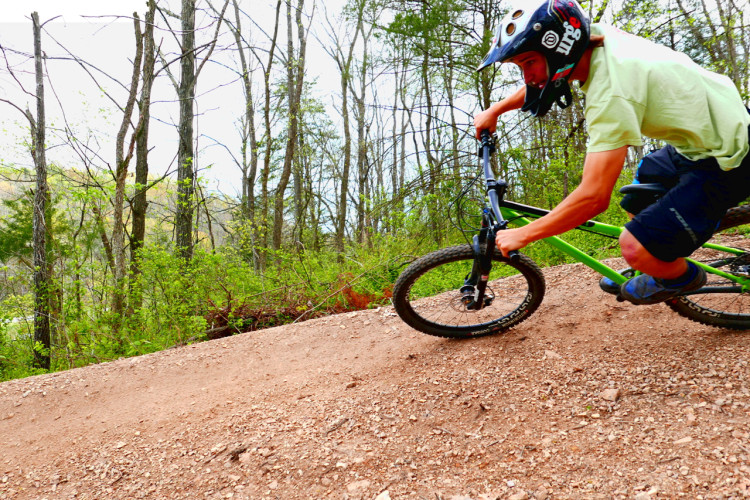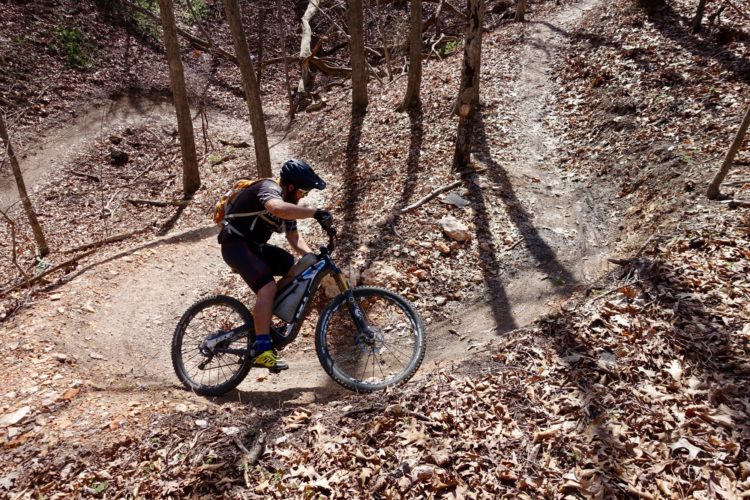
Flow: that sought-after, heightened state of mind, perfectly tuned into vibrational balance with the elements. How do you reach that space where time ceases, where your body, mind, and tread are gripping the dirt in synchronous harmony? And what about mental and physical motivation – the intrinsic will to do, to get out and seize a goal. Ingestible aids are all the rage: caffeine to stimulate, a beer to chill out. Whatever and however you seek to fulfill your needs, carpe diem. But have you ever thought about why music is used as an ergogenic catalyst for achievement?
For centuries, music has been used to foster a positive demeanor, healing the body from mental and physical illness. Modern research supports these old claims, and also delivers new information: it can ignite the power needed to pedal harder and faster. Not only does it enhance physiological output, it promotes the creation of a whole body experience through the use of additional auditory sensory input. It facilitates the capability to emotionally connect to a place or event in time – it’s why we each have those songs that immediately remind us of a unique moment in life. And that last thing – the connection thing – is a fundamental reason for why many of us mountain bike.
Motivational qualities associated with a person’s favorite genre are innately fabricated from several factors, such as influence from youth (what your parents listened to), culture, and significance of the messages and rhythms in the chosen tracks. But, who cares if Joey loves EDM and Betty jams to punk rock… the end-states are the same, and a lot of them kick ass.
Music improves performance.
When researchers compared the effects of music on running speed, heart rate, and perceived exertion in 30 treadmill runners, they found significant positive influences when the subjects listened to any type of music (compared to no music). Furthermore, the louder and faster the jam, the more significant the ergogenic effects. Sweet!
Other studies support these conclusions – music promotes relaxation in certain parts of the body, lowering heart rate, systolic blood pressure, and blood lactate levels during submaximal exercise. In response, blood flow is increased and can be more efficiently delivered to where it is needed (i.e. your legs). Lactate clearance improves as well.
To take it a step further, when you workout in sync with the music tempo, it’s likely you’ll be able to exercise longer. Depending on the type of ride you’re doing, choose an accompanying playlist that matches your desired output.
All in all, who doesn’t want to shred more trail… and shred more fat, too. Rock on, Kirk Hammett:
Music regulates your mood.
Several decades of research have supported the theory that music enhances positive mood and decreases the prevalence of negative thoughts. Medically, music is healing. Motivational enhancement can be generated by jams composed of positive chords, an upbeat tempo, and/or an inspiring message. The overall result is an improved spirit, and can reduce symptoms associated with clinical depression and anxiety.
Music allows for dissociation from exercise-associated discomfort and negative rumination – a great asset for those adventures into the pain cave. If inhibition is reduced, self-consciousness also decreases. Think of it as a mindfulness practice.
Can listening to music before a race be helpful? Absolutely. According to a pretty cool exploratory review conducted in 2006, “Collectively, research has shown that pre-task music can manipulate activation states through its arousal control qualities, facilitate task-relevant imagery, promote flow, and enhance perceptions of self-confidence.” Pump yourself up!
In contrast, slower, soft music has a parasympathetic (calming) effect, and depending on the type and reason for your ride — like if you need to chill the hell out — this may be the perfect prescription.

Music will help you find flow.
Flow can be defined as a state of consciousness without ego. Hungarian psychologist Mihaly Csikszentmihalyi, an expert in the field of heightened mental states, describes it as “being so involved in an activity that nothing else seems to matter. The ego falls away. Time flies. Every action, movement, and thought follows inevitably from the previous one, like playing jazz. Your whole being is involved, and you are using your skill to the utmost.”
[see_also id=”189771″][/see_also]
Ask yourself – what kind of mental state do you need to acquire to find this place? According to science, the only person that can answer this is you. Studies show that self-selected music played before and during exercise can help an individual sink into the cognitive state associated with flow, inhibiting thought patterns and emotions that interfere with performance.
Enhanced focus away from thoughts promotes awareness of the moment, allowing you to be in it and embrace the present. Synchronizing your efforts on the bike with the rhythmic patterns presented audibly through your earbuds enhance your ability to bank turns and clean drops in the way your mind and body wants to.

One thing that culminates from all this nerdy data: Music promotes enjoyment of life’s moments. This isn’t saying that sinking into your surroundings, listening to the whistling birds and crunch of singletrack beneath your tread isn’t right – sometimes that is exactly what you need. Either way, the more you enjoy your rides, the more likely you are to ride when your mind tries to talk you out of it – those days you’re tired, busy, or whatever other excuse your ego threatens with convincing rationality. When that mental devil appears, turn to your stereo and crank it up to eleven!
Looking to add some new tunes to your collection?
Check out this list of favorite shred-accompanying jams submitted by our readers! There’s also a Spotify Playlist.
- Pantera: I’m Broken
- Iron Maiden: Run to the Hills
- Kendrick Lamar: The Recipe (feat. Dr. Dre)
- ODESZA: White Lies (feat. Jenni Potts)
- Love Grenades: Young Lovers (Sam Sparro Edit)
- Black Sabbath: Jack the Stripper/Fairies Wear Boots
- Liquid Tension Experiment: Paradigm Shift
- Marian Hill: Got It
- Ministry: Burning Inside
- Puscifer: Queen B
- Deadmau5: I Remember
- Slayer: Behind the Crooked Cross
- Tool: Aenema
- Metallica: For Whom the Bell Tolls
- Flume: Never Be Like You (feat. Kai)
- Ludacris: Move Bitch
- Møme – Aloha (feat. Merryn Jeann)
- Minor Threat: Seeing Red
- DJ Tiesto feat. Jes Brieden: Everything (Cosmic Gate Remix)
- Led Zeppelin: Immigrant Song
References:
Brownley, K. A., McMurray, R. G., & Hackney, A. C. (1995). Effects of music on physiological and affective responses to graded treadmill exercise in trained and untrained runners. International Journal of Psychophysiology, 19(3), 193-201.
Edworthy, J., & Waring, H. (2006). The effects of music tempo and loudness level on treadmill exercise. Ergonomics, 49(15), 1597-1610.
Karageorghis, C. I., & Terry, P. C. (1997). The psychophysical effects of music in sport and exercise: A review. Journal of Sport Behavior, 20(1), 54.
Kiran, K., Pavithran, P., & Das, S. K. (2016). Effect of music during exercise on rate of perceived exertion & mood status. International Journal of Medical Research and Review, 4(09).
Seligman, Martin (2002). Authentic Happiness. New York, NY: Free Press.
Terry, P. C., & Karageorghis, C. I. (2006, September). Psychophysical effects of music in sport and exercise: An update on theory, research and application. In joint conference of the Australian psychological society and the New Zealand psychological society (pp. 415-9).



















